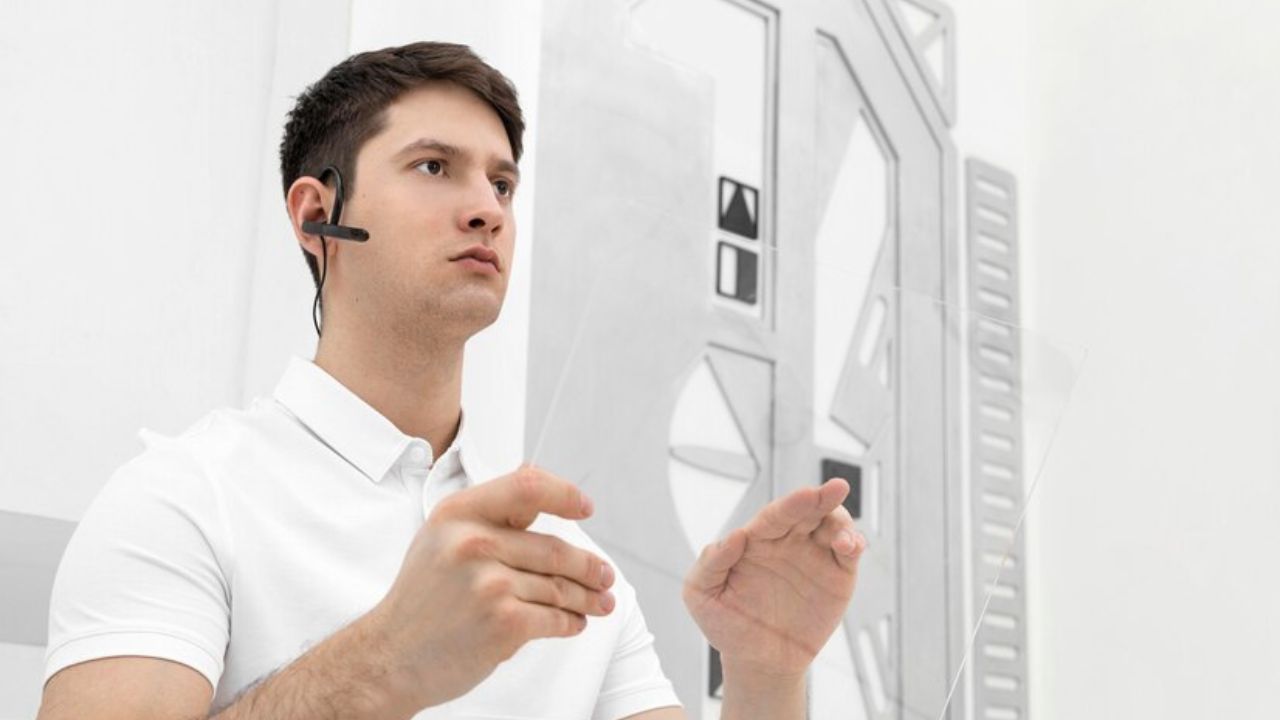BLOG
The shape of sympathy – illustration postcard book set

In a world where digital communication reigns, there’s something uniquely personal about sending a handwritten postcard. The shape of sympathy – illustration postcard book set invites us back to this heartfelt tradition with a modern twist. Perfect for those who appreciate art and sentiment, this set merges the tactile charm of paper with the evocative power of illustrations.
This blog post will guide you through the enchanting world of illustrated postcards, explaining their charm and practicality. Whether you’re an art enthusiast or someone looking to send more meaningful messages, you’ll discover why this set is a must-have. Let’s explore how these postcards combine art and empathy to create beautiful connections.
The Allure of Illustrated Postcards
Illustrated postcards hold a timeless appeal that goes beyond simple paper and ink. Each card captures a moment, an emotion, or a message that can be shared with anyone, anywhere. Unlike digital messages, they offer a tangible connection that can be cherished and displayed.
For art lovers, illustrated postcards are miniature canvases, showcasing a range of styles and techniques. They allow artists to experiment with visual storytelling and provide recipients with a slice of creative expression. This set, in particular, features a variety of themes and colors, ensuring there’s something for everyone.
Ultimately, the charm of illustrated postcards lies in their ability to convey personal messages with a touch of artistry. They transform ordinary words into memorable experiences, connecting sender and recipient through shared sentiments.
Why Choose The Shape of Sympathy Set?
The “Shape of Sympathy” set stands out in the world of illustrated postcards for several reasons. First, it offers a thoughtfully curated collection of images that evoke empathy and understanding. Each illustration is carefully crafted to inspire emotions and spark imagination.
Secondly, the set is designed with high-quality materials, ensuring durability and vibrancy in every postcard. Whether you’re sending one across the globe or keeping it as a collectible, you’ll appreciate the craftsmanship that goes into each card.
Lastly, the set’s versatility allows it to be used for various occasions and purposes. From birthdays to thank-you notes, each postcard serves as a canvas for your thoughts and feelings, adding a personal touch to any message.
The Artistic Journey Behind the Illustrations
The creation of each postcard in the “Shape of Sympathy” set involves a meticulous artistic process. Artists begin with a concept, often inspired by emotions, nature, or everyday life. These ideas are then translated into sketches, capturing the essence of the intended message.
Once the initial design is complete, artists refine their work, experimenting with colors and textures to enhance the illustration. The final product is a harmonious blend of lines, shapes, and hues that convey emotion and meaning. This process not only showcases the artist’s skill but also invites viewers to interpret and connect with the artwork on a personal level.
The result is a collection of postcards that serves as both art pieces and communication tools. Each card tells its own story, inviting recipients to engage with the imagery and reflect on their own experiences.
How Postcards Foster Connection in a Digital Age
In today’s fast-paced world, digital messages are often fleeting. Postcards, however, offer a lasting form of communication that fosters genuine connections. When someone receives a handwritten card, they know that time and thought have gone into its creation.
The act of writing and sending a postcard encourages mindfulness and intention. It allows senders to pause and reflect on their message, crafting words that carry weight and significance. Recipients, in turn, feel valued and appreciated, knowing that someone took the time to reach out in a meaningful way.
By bridging the gap between digital and physical worlds, postcards like those in the “Shape of Sympathy” set bring people closer together. They provide a tangible reminder of relationships and shared moments, creating connections that endure.
Creative Ways to Use Your Postcard Book Set
The “Shape of Sympathy” set offers endless possibilities for creativity and expression. Here are a few ideas to get you started:
- Personalized Gifts: Use the postcards as gifts, writing a personalized message or quote on each one. Bundle them up with string or ribbon for a thoughtful present.
- Home Decor: Frame your favorite illustrations and display them in your home or workspace. The vibrant designs add a pop of color and personality to any room.
- Inspiration Board: Create a collage or inspiration board with postcards, photos, and other mementos. This visual display can serve as a source of motivation and creativity.
These are just a few ways to make the most of your postcard set. The key is to explore and experiment, finding new ways to share and enjoy these beautiful cards.
The Emotional Impact of Sending Postcards
Sending a postcard is more than just sharing words – it’s about conveying emotion and building relationships. When you take the time to write a personal message, you create an opportunity for empathy and understanding.
The “Shape of Sympathy” set amplifies this emotional impact with its evocative illustrations. Each card serves as a visual expression of the sentiments within, enhancing the recipient’s experience and deepening the connection between sender and receiver.
In a world where genuine connections are increasingly rare, postcards offer a powerful means of communication. They remind us of the importance of empathy, kindness, and human connection, making every message more meaningful.
Exploring the Themes of Sympathy and Understanding
The illustrations in the “Shape of Sympathy” set aren’t just beautiful; they explore deep themes of sympathy and understanding. Each card is designed to evoke a range of emotions, encouraging viewers to reflect on their own experiences and relationships.
Whether it’s a serene landscape, a tender moment, or a whimsical scene, each image invites contemplation and connection. These themes resonate with recipients, offering comfort, encouragement, or inspiration when they need it most.
By exploring these themes, the postcard set provides more than just visual appeal – it offers a meaningful way to engage with others and express compassion.
Building a Community of Art and Sentiment
The “Shape of Sympathy” set is more than just a collection of postcards; it’s an invitation to join a community of art lovers and empathetic communicators. By using these cards, you become part of a movement that values creativity and expression.
This community extends beyond the act of sending and receiving postcards. It encourages individuals to connect, share ideas, and inspire one another through art and sentiment. Whether you’re exchanging cards with friends or participating in postcard swaps, you’ll find a network of like-minded individuals who appreciate the power of illustration and empathy.
By joining this community, you can explore new perspectives, share your experiences, and contribute to a collective appreciation for art and connection.
Enhancing Your Postcard Experience with Technology
While postcards offer a traditional form of communication, technology can enhance and expand your experience. From online galleries to digital postcards, there are many ways to explore the world of illustrated art.
Consider using social media to share your postcard collection and connect with other enthusiasts. Platforms like Instagram and Pinterest are great for discovering new artists and finding inspiration for your own projects.
Additionally, look for apps and websites that offer digital postcards or augmented reality features. These tools can add a modern twist to your postcard experience, providing new opportunities for creativity and engagement.
The Future of Postcards in a Digital World
Despite the rise of digital communication, postcards continue to hold a special place in our hearts. They offer a unique blend of personal connection and artistic expression that can’t be replicated by technology alone.
Looking ahead, the future of postcards will likely involve a blend of traditional and digital elements. We’ll see more collaborations between artists and tech innovators, resulting in new formats and experiences for sharing and enjoying illustrated art.
Whether you’re a longtime postcard fan or new to this art form, the possibilities are endless. The “Shape of Sympathy” set is just the beginning of your exploration, offering a glimpse into a world where art and empathy intersect.
Conclusion
The shape of sympathy – illustration postcard book set offers a delightful blend of artistry and connection. Through its thoughtfully curated collection, you can explore themes of empathy and understanding, all while fostering meaningful relationships.
Whether you’re sending messages to loved ones or discovering new ways to enjoy art, these postcards provide endless possibilities for creativity and engagement. They remind us of the beauty in small gestures and the power of human connection.
Ready to start your postcard journey? Explore the “Shape of Sympathy” set today and discover the joy of sharing art and sentiment with the world.
BLOG
How Office Chairs Influence Workplace Collaboration and Communication

The design of an office environment plays a significant role in shaping the culture and productivity of a workplace. Among the many elements that contribute to a productive workspace, office chairs stand out as one of the most influential factors in fostering collaboration and communication. The comfort, functionality, and ergonomics of office chairs directly impact how employees interact with each other, how meetings are conducted, and the overall atmosphere of the workplace.
Comfort and Communication Flow
One of the primary ways office chairs influence communication is through comfort. When employees are comfortable, they are more likely to engage in open conversations, collaborate freely, and contribute ideas during meetings. Uncomfortable seating can lead to distractions, with employees shifting positions or feeling restless, which ultimately hampers their ability to focus and participate.
An ergonomic office chair provides support, helping individuals maintain good posture for longer periods. This encourages active participation in discussions, as employees are less likely to feel fatigued or distracted by physical discomfort. For example, an office chair with lumbar support helps prevent back strain, allowing individuals to stay focused on the conversation instead of shifting uncomfortably.
Facilitating Informal Interactions
Collaboration doesn’t just happen during scheduled meetings or brainstorming sessions. Many innovative ideas are born from spontaneous conversations between colleagues. Office chairs that are mobile, lightweight, and flexible enable employees to move around the workspace and interact with others easily. Chairs on wheels, for instance, allow team members to move between workstations, gather around shared spaces, or engage in impromptu discussions without disrupting the flow of work.
In open-plan offices, where informal communication is often the norm, flexible office chairs can encourage greater movement and interaction. A collaborative environment is more likely to thrive when employees can comfortably engage with one another without feeling restricted by their seating arrangement. The ability to move easily between colleagues fosters a more connected and communicative workplace culture.
Impact on Meeting Dynamics
Meetings are a critical aspect of collaboration and communication in any organisation. The type of office chair used in meeting rooms can greatly influence the effectiveness of these discussions. Comfortable, adjustable chairs that allow participants to sit for extended periods without discomfort can help maintain focus during long meetings.
Moreover, the layout of the seating arrangement is essential. Circular or semi-circular seating arrangements encourage equal participation, as every person can face one another directly. This layout, paired with ergonomic office chairs, ensures that all team members can engage comfortably in discussions without being hindered by physical discomfort.
Additionally, chairs with swivel features allow individuals to easily rotate and engage with others, promoting a dynamic exchange of ideas. A flexible seating arrangement in a meeting room can make a huge difference in how effectively information is communicated and ideas are shared.
Encouraging Team Collaboration in Breakout Areas
While much of the focus is on individual workspaces, breakout areas also play a crucial role in fostering collaboration. These spaces are designed for team discussions, brainstorming, and creative thinking. Comfortable and versatile office chairs in these areas help teams come together and communicate effectively.
For example, lounge-style chairs or collaborative seating arrangements can create a more relaxed and open atmosphere, encouraging creativity and idea-sharing. In these settings, employees are more likely to feel comfortable expressing their thoughts, leading to increased collaboration and more productive discussions.
The right office furniture, such as chairs designed for group settings, can transform a simple break room into a productive collaborative space, allowing teams to engage in brainstorming sessions and problem-solving discussions away from their desks.
Promoting Well-being and Mental Health
Employee well-being is intrinsically linked to productivity and collaboration. A comfortable office chair that supports good posture and reduces strain can contribute significantly to mental and physical well-being. When employees feel well-supported, they are more likely to have positive interactions with colleagues, engage in team activities, and contribute to the workplace culture.
Furthermore, office chairs that promote health and comfort can reduce stress levels. High-quality ergonomic chairs can minimise the risk of musculoskeletal disorders, which can lead to chronic pain and reduced mobility. This ensures that employees remain in good health, allowing them to participate fully in team activities, meetings, and collaborative efforts.
In addition to physical comfort, office chairs that provide a sense of personal space can help employees feel more secure and confident in their work environment. This sense of security encourages open communication and collaboration, as employees are less likely to feel distracted or stressed by their surroundings.
The Role of Office Furniture in Workplace Design
The design of office furniture, including chairs, plays a significant role in creating an environment that fosters communication and collaboration. Thoughtfully designed office furniture supports the dynamic needs of modern workspaces, where collaboration, flexibility, and mobility are key.
For instance, office chairs that are adjustable allow employees to customise their seating to suit their individual preferences, which enhances both comfort and productivity. When employees are comfortable, they are more likely to engage in collaborative activities and share their ideas with colleagues. Additionally, office furniture that promotes openness, such as chairs with transparent materials or modular designs, encourages communication by making the environment feel more inviting and accessible.
Conclusion: Creating a Collaborative Culture Through the Right Office Chairs
In conclusion, office chairs are not just functional pieces of furniture; they are pivotal to the overall dynamics of workplace collaboration and communication. From encouraging informal interactions to facilitating effective meetings, the right office chair can significantly enhance how employees connect and work together. When paired with thoughtful office furniture design, ergonomic and comfortable seating creates an environment that promotes well-being, reduces distractions, and fosters a culture of collaboration. By investing in quality office chairs, businesses can improve communication, teamwork, and overall productivity in the workplace.
BLOG
Why Choosing the Right Top Coat Can Transform Your Building’s Appearance

When it comes to home and building maintenance, ensuring long-lasting protection and aesthetic appeal is crucial. A top coat can decide whether your exterior surfaces remain resilient against the elements or show signs of wear over time. While many may not pay much attention to the materials used for this layer, they play a pivotal role in your structure’s protection and appearance. Not only does the right top coat improve durability, but it also adds a finishing touch that elevates the overall aesthetic. In today’s market, various options are available, each offering unique benefits for different surfaces and conditions. Selecting the best product requires careful consideration of weather resistance, ease of application, and compatibility with the surface beneath. Let’s examine how a well-chosen top coat can make all the difference.
Factors to Consider When Choosing a Top Coat
When selecting a top coat for your building, several key factors must be considered. First and foremost, you need to consider the material of your existing surfaces. Whether you’re working with rendered walls, masonry, or other building materials, your top coat must be compatible. The weather conditions in your area will also play a significant role in this decision. For example, areas that experience heavy rainfall or extreme temperatures require a top coat to withstand these stresses. Additionally, the finish of the top coat can impact not only the look of the building but also how easily it repels dirt, mold, and other environmental contaminants.
How a Silicone Top Coat Protects Your Surfaces
A silicone-based top coat is one of the most effective exterior protection solutions. Silicone offers exceptional resistance to water penetration, which makes it ideal for protecting surfaces in areas with high humidity or frequent rainfall. This material forms a flexible, breathable layer that prevents cracking, peeling, or flaking. Additionally, silicone is known for its ability to withstand UV rays, helping to maintain the vibrancy and integrity of the surface beneath for extended periods. With products like those offered by Licata, you can ensure that your building will be well-protected from the damaging effects of weather while retaining its aesthetic appeal.
The Long-Term Benefits of Using a Quality Top Coat
Investing in a high-quality top coat is not just about immediate protection. Over time, this layer will continue safeguarding your building from environmental wear, reducing the need for frequent maintenance or repairs. A durable top coat can also help to keep your building looking fresh and new, minimizing the need for touch-ups or reapplications. This long-term benefit translates to cost savings, as you won’t have to worry about the same level of maintenance. Furthermore, a well-maintained building with a strong top coat can boost its overall value, making it a wise investment for residential and commercial properties.
Application Tips for a Smooth Finish
When applying a top coat, following the correct steps is crucial to ensure a smooth and even finish. First, ensure the surface is clean and free of dust or debris. Any imperfections in the surface should be repaired before applying the top coat. Once the surface is ready, apply the top coat using the recommended tools, such as brushes or rollers, depending on the product instructions. Following the manufacturer’s guidance is essential to avoid uneven coverage or bubbling. Additionally, consider the weather conditions when applying the top coat, as extreme temperatures or humidity can affect the curing process.
Why Timely Application Matters
Applying a top coat on time can prevent long-term damage to your building’s exterior. Delaying the application could allow moisture to seep into the underlying layers, which can lead to structural damage over time. A timely application also prevents the surface from exposure to the harsh effects of UV rays, dirt, and other environmental factors. This early intervention ensures that your building remains in top condition, with minimal weather-related damage or wear risk. Don’t wait for the signs of deterioration to appear—apply your top coat immediately for the best results.
Choosing the right top coat can be a game-changer for your building’s longevity and curb appeal. A product that offers superior protection against the elements will enhance the exterior and save you time and money in the long run. Licata provides a range of silicone-based top coats designed to keep your building looking pristine while ensuring it’s protected for years to come. Don’t hesitate to explore the options that best suit your needs and make the right choice today!
BLOG
How a Small Business Improved Security with Access Control

In today’s challenging economic environment, security remains a top priority for businesses of every size. Small businesses, in particular, often look for cost-effective yet robust solutions to secure their premises without incurring excessive overheads. One strategic move that has proved beneficial is adopting electronic access control systems Orlando. By integrating such systems, businesses enhance their security, safeguarding their assets and employees against potential threats.
The Security Landscape for Small Businesses
Small businesses are more frequently targeted by security breaches than larger counterparts due to perceived vulnerabilities, so adequate protection is critical. Many businesses have realized the potential of access control systems in reducing unauthorized entries and monitoring activities, which collectively contribute to a safer business environment. These systems provide seamless control over who can access certain areas within a facility, ensuring that only authorized personnel are granted entry.
Types of Access Control Systems
Biometric Systems
Biometric systems offer high security by using individuals’ unique biological characteristics for access. This makes them ideal for small businesses handling sensitive data.
Card-based Access
Card-based access is popular in workplaces because it is convenient and easy to use. Employees can use these to enter authorized areas efficiently.
Mobile Access and Keypad Systems
Mobile access solutions turn smartphones into digital keys, offering flexibility in rapidly changing work environments. Meanwhile, keypad systems provide an intuitive entry method using codes that can be easily managed and updated.
Benefits of Implementing Access Control
Adopting an access control system yields numerous benefits for small businesses. Here are a few key advantages:
- Enhanced Security: These systems protect premises against unauthorized intrusions, preventing potential losses.
- Operational Efficiency: By automating entry processes, businesses can streamline operations, freeing up resources to focus on core tasks.
- Data-Driven Insights: Advanced systems capture access data, allowing owners to analyze trends and enhance security planning.
Integration with Smart Technology
Combining access control systems with smart technology unlocks further potential for operational efficiencies. Features such as remote management, real-time monitoring, and instant alerts allow business owners to maintain oversight over security operations even from offsite locations.
Considerations for Access Control Systems
Choosing the right access control system requires a careful evaluation of several factors, including budget, compliance, and the business’s specific security needs. Longevity and adaptability are also crucial considerations, as the business may evolve and require systems that can scale accordingly.
Future Trends in Access Control Systems
As technology continues to advance, the incorporation of artificial intelligence in access control could revolutionize security protocols. A recent study on AI’s influence on security systems explored the potential for enhanced analytical capabilities, indicating great promise for future developments that are both responsive and predictive.
Conclusion
Access control systems protect small businesses against unauthorized access and potential breaches. Owners can boost their security posture by thoughtfully selecting and implementing a system that fits specific business needs. While the initial investment may present a financial commitment, the long-term peace of mind and operational benefits offer immeasurable value. The integration of AI and smart technologies will bring further advancements, setting a new benchmark for business security solutions.
-

 BLOG8 months ago
BLOG8 months agoTribute Printed Pics: Top 10 Ways to Honor Loved Ones
-

 NEWS7 months ago
NEWS7 months agoNEWS JoTechGeeks: How to Stay Updated with the Latest News
-

 BLOG5 months ago
BLOG5 months agoThe //Vital-Mag.net Blog: Your Daily Dose of Inspiration
-

 ENTERTAINMENT8 months ago
ENTERTAINMENT8 months agoFreemoviesfull.cc: Ultimate Guide
-

 HEALTH8 months ago
HEALTH8 months ago2023-1954: Enhancing Health and Vitality
-

 TECH8 months ago
TECH8 months agoWww abithelp .com: Your Ultimate Online Assistance Platform
-

 HEALTH8 months ago
HEALTH8 months agowww healthsciencesforumcom: A Trusted Health Sciences Platform
-

 TECH8 months ago
TECH8 months agoWebtoon XYZ: A Journey into the World of Digital Comics
